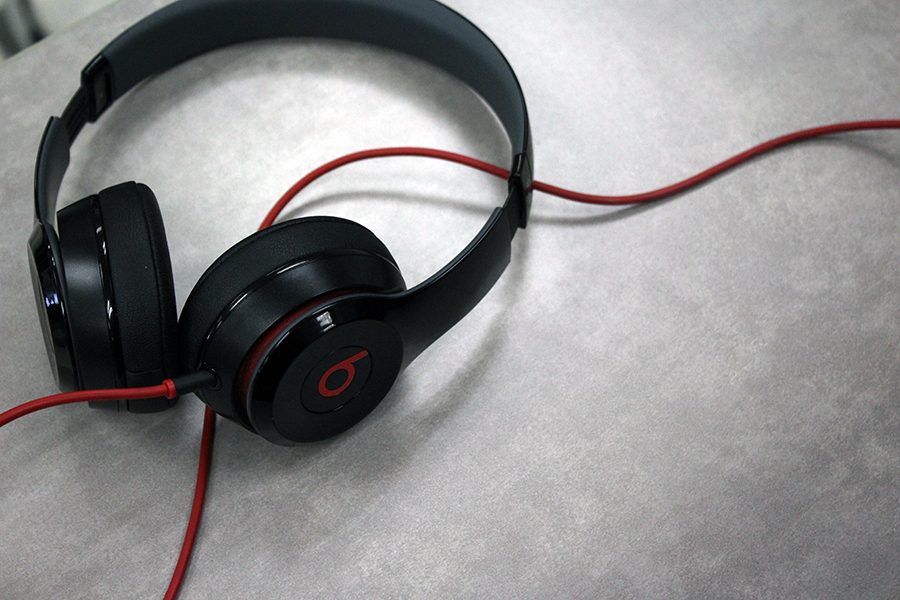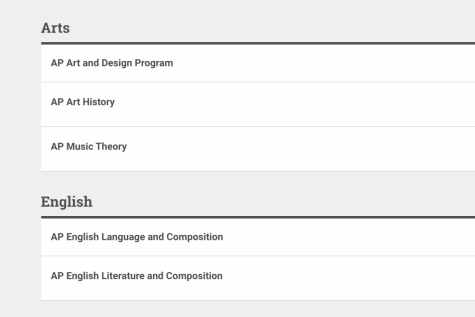School noise levels found to be dangerous
Prolonged exposure could cause permanent hearing loss
Even at a low volume, headphones can expose students to dangerous levels of sound in classrooms. Wearing headphones without volume can help to block out sound.
In a pep rally or walking past that person who blares their music in the hallway, Lions can get loud. Very loud. With 2,000 students in a mostly enclosed campus, noise levels can run rampant as friends gossip and teachers lecture. As deaf awareness posters pepper the hallways, students are becoming more and more conscious of the sounds that travel their ears.
Because ¼ Americans’ cause of hearing loss is noise induced, communities need to be aware of their collective sound levels. Sound is measured by decibels, something easily tracked with a phone app. 0-85 decibels, or dB, is considered a safe sound pressure, but anything over 85 dB can cause permanent hearing loss. To give a frame or reference, 0 dB is the rustle of papers and 90 dB is a blender going off in culinary arts. To discover more about the sound levels on our own campus, I looked to measure the decibel level in an ordinary school day.
The first test was in a computer lab with about six students typing and chatting occasionally which averagely registered 60 dB, the sound of a normal conversation. Walking in the hallway with a few students working on projects silently netted the same result. At lunch time, the tests yielded higher results. In the library, in the tiled area where students were eating lunch, the decibel levels average about 75. A quick step outside the sliding doors showed a significant increase and change in volume level, jumping from 75 db to 85 db. The outdoors did little to help the sound, averaging around 80 db.
The levels measured don’t include added noise, such as listening to music with earbuds or talking with a friend. Listening to music with earbuds or headphones at maximum volume on the iPhone is about 100 dB, already in the unsafe range. Listening at 50% of the volume (50 db) in a relatively quiet classroom (60 db) reaches the dangerous level as well.
Without paying attention to volume levels, it can be easy to reach the unsafe zone. By simply eating lunch, students’ ears are exposed to hazardous levels of noise. Studies have suggested that American teenagers could be exposed to more noise at school than workers in a factory. After four years of prolonged heavy noise exposure, the chances of developing permanent hearing loss can get pretty high. An absolute solution would include costly soundproofing measures so students are reduced to independent efforts. To mitigate the negative effects of harmful noise levels, it’s recommended to protect your ears by wearing earbuds or headphones with the sound off, walk away from the sound, or turn volume levels down. Or, the best solution might be to actually listen to the librarian and quiet down.

Hi! I'm Michelle Parker, this is my second year on The Roar staff. I’m very excited to see what this year brings us. I have three dogs whom I love and...



![Junior Serra Lumbreras crafts her homecoming mum during Floral Design 1 from ribbon and cardboard; it's a tradition for extravagant mums to be made and worn throughout the Friday before the homecoming game. "I've never made a mum before," Lumbreras said. "It's very easy if you listen to instructions-- [after that] it's all about creativity. Homecoming is super exciting [because] once the dance is over with we look back on it and think: 'wow we did that.'"](https://lhsroar.com/wp-content/uploads/2024/09/homcoming_mum_sierra_lumbreras-400x600.jpg)


